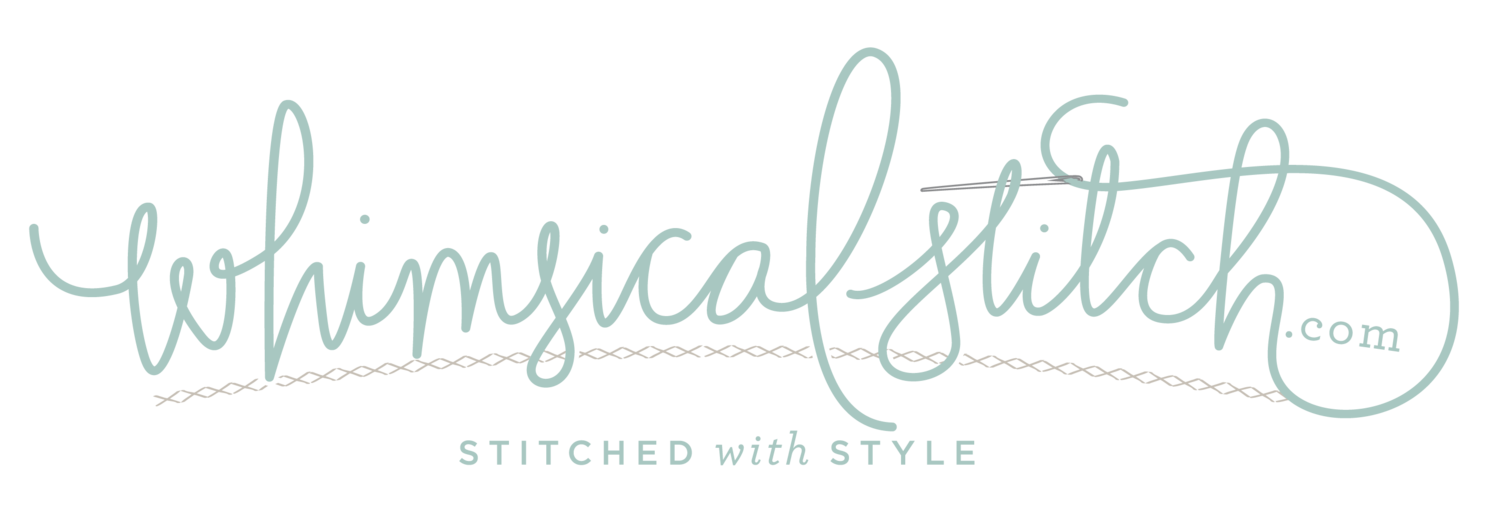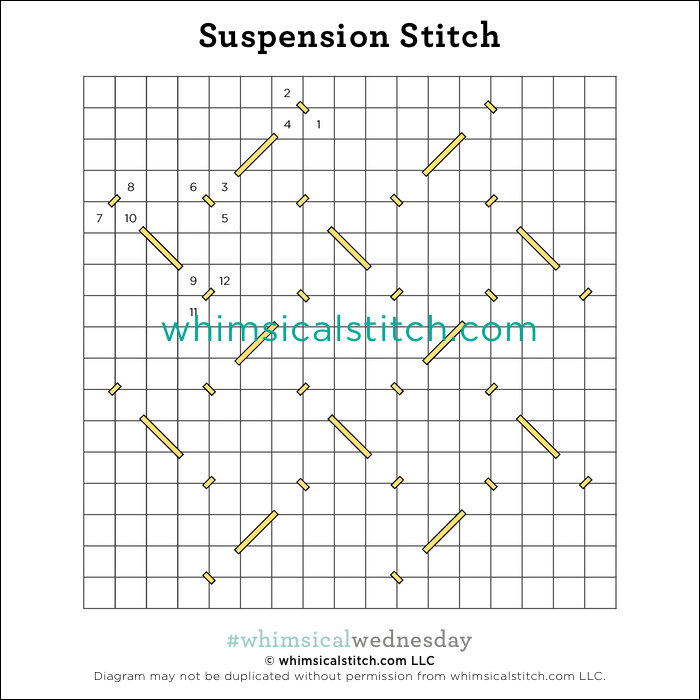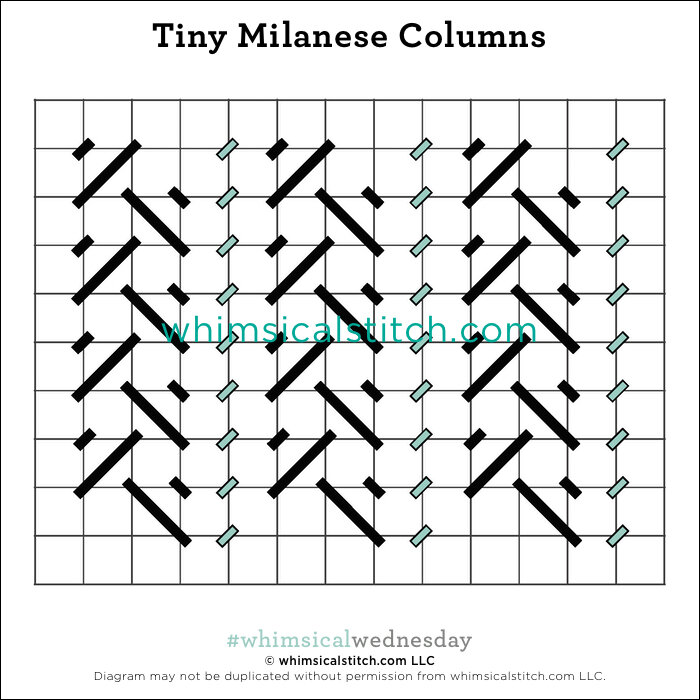For those who feel it is too early for Halloween and/or don’t like open stitches, today’s post may not be for you. For the rest of us, rejoice! Halloween season is upon us!
Today’s stitch is from Never More from Melissa Shirley Designs, a project I worked on at this weekend’s embellishment class at Bedecked and Beadazzled. It’s a variation of a favorite layered stitch using Soie d’Alger (aqua lines) with sequin and bead accents. Sequins are always welcome, but I consider them essential for Halloween. I included two photos so you could see the pretty layering and sequins as well as the overall stitch in context.
The shading on this pumpkin is one of the reasons I love open stitches. I consider open stitches the best of both worlds. You can see the beautiful painting but still add sparkle and charm.
I’m looking forward to using this stitch for a beautifully painted dress, especially one with a poofy skirt, using an overdyed silk floss with a single bead or pearl in the corners (instead of the sequins). It will also make a fun floor or roof with Mandarin Floss. I suggest replacing the sequins with four tent stitches in a lightweight metallic, such as Petite Silk Lame.
This stitch diagram, along with all other #whimsicalwednesday and #smallspacesunday stitch diagrams, can also be found on a Pinterest board here. Be sure to follow whimsicalstitch.com on Facebook, Pinterest, Instagram, and Twitter.
IIf you like what you see on this blog, there's more: Mary’s Whimsical Stitches Volume 1 is a contemporary how-to collection of more than 250 stitches for stitchers regardless of skill level. The book includes updated and sequenced diagrams from this blog, all-new stitches, and a chapter on the basics of needlepoint; Mary’s Whimsical Stitches Volume 2 features chapters on Balanced, Beading, Diagonal, Layered, Oblique, Small, and Straight stitches.
Also, you can download for free the first chapter from my first book which covers basic needlepoint stitches and stitch compensation techniques along with new top-line information on needlepoint materials and tools, how to handle threads, and other helpful needlepoint resources.
whimsicalstitch.com also sells Stitch Guides and Stitch Concepts for Melissa Shirley Designs, Zecca Designs, Sandra Gilmore, Purple Palm, Maggie, and Penny MacLeod, and many more. Click here to see the newest guides and click here to see the entire collection.
I hope you have the perfect spot for this stitch! Please enjoy! Have a wonderful #whimsicalwednesday!
A Note about Diagrams
I use color in diagrams to make them as clear as possible. The primary function of different colored lines is to illustrate a stitch sequence. For example, layering of colors demonstrates you add them in that order. They can also provide ideas on how to integrate additional threads (one line for each color). Or, you can use the same thread for all color lines. That's where I encourage you to use your imagination for the space you are stitching!































